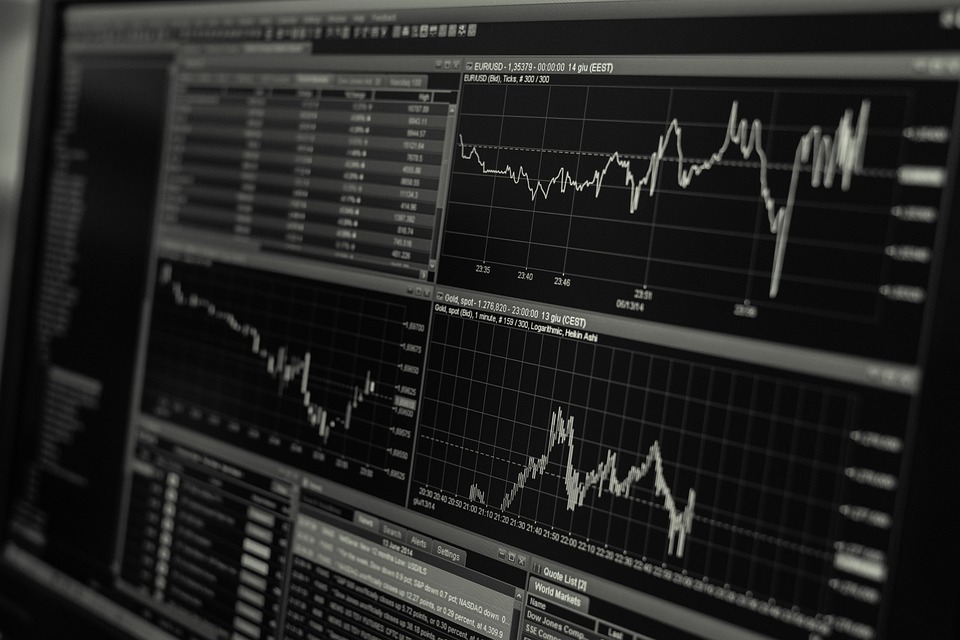 Image source: PixabayMARKETSUS stocks slid on Thursday due to disappointing third-quarter results from Big Tech companies amid the higher-for-longer Fed mantra.Record concentration means the S&P 500 has never been more dependent on the continued strength of its largest constituents or more vulnerable to an idiosyncratic shock to any of these stocks. Elevated multiples, a rapidly shifting geopolitical and macroeconomic backdrop, and crowding represent the critical risks to today’s market leaders’ absolute returns. Indeed, the top-heavy nature of the S&P 500, which has benefited index returns YTD, may finally be working against investment returns as the 3Q earnings season progresses.In the third quarter, real GDP in the United States expanded at an annualized rate of 4.9%, surpassing expectations. Today’s growth data reflects how strong economic growth momentum has been throughout 3Q, underpinned by strength in the US consumer. Remarkably, the ~5% GDP growth pace has contradicted market expectations until a few months ago when the US economy entered a recession and forced the Fed to cut rates.But now, ‘soft landing’ and ‘higher-for-longer’ rates have been increasingly priced into risk assets, investors might question how durable this economic momentum will likely be. In real life, the present determines the future. In the stock market, it’s the other way around.Indeed, markets are a forward-looking machine where many already think the economy’s resilience is expected to face challenges soon. Factors like the tightening in financial conditions on the back of a “higher for longer” Fed, conflicts in Ukraine and the Middle East, and consumer payback after an intense summer of spending highlighted by Taylor Swift and Beyonce tours, the strength of the economy could undoubtedly be tested. Finally, I suspect traders have circled November 1 in the calendar when the Treasury will provide insights into the government’s issuance plans for the next three months. Obviously, the market is hoping for more T-bills than long bonds as there is still around $1.1 trillion in the Fed’s RRP facility, and money market funds hold record assets under management (AUM); it’s believed that the market could absorb more bills and do so relatively smoothly.OIL MARKETSTraders go searching for the elusive Q4 deficits. Before the resurgence of geopolitical tensions in the Middle East, the crude oil market had been experiencing a decline in prompt Brent futures and physical oil prices. Prompt Brent futures prices had dropped by over $10 per barrel from their late September highs. Recall forecasters had expected a significant inventory draw over the last five weeks based on the supply-demand balance due to OPEC+ production curtailment. Still, those bullish estimates have not materialized, so we could be returning to pre-geopolitical risk dynamics without apparent supply impact due to the Middle East conflict.More worryingly on the macro front, given that US consumer driving habits can be a good indicator of economic activity, EIA data showed gasoline consumption in the most recent week averaged 8.8 million bpd, some 3% below the five-year average.Still, due to the potential for energy prices to rise significantly due to geopolitical conflicts and unexpected winter weather disruptions, coupled with the inherent uncertainty in predicting geopolitical events, it’s unlikely the market goes full-on bear until the geopolitical risk premium fully evaporates. But Q4 could be challenging on the macro front where US GDP could fall below 1 %.More By This Author:Asia Open: There’s A Price To Pay For Strong Economic Data
Image source: PixabayMARKETSUS stocks slid on Thursday due to disappointing third-quarter results from Big Tech companies amid the higher-for-longer Fed mantra.Record concentration means the S&P 500 has never been more dependent on the continued strength of its largest constituents or more vulnerable to an idiosyncratic shock to any of these stocks. Elevated multiples, a rapidly shifting geopolitical and macroeconomic backdrop, and crowding represent the critical risks to today’s market leaders’ absolute returns. Indeed, the top-heavy nature of the S&P 500, which has benefited index returns YTD, may finally be working against investment returns as the 3Q earnings season progresses.In the third quarter, real GDP in the United States expanded at an annualized rate of 4.9%, surpassing expectations. Today’s growth data reflects how strong economic growth momentum has been throughout 3Q, underpinned by strength in the US consumer. Remarkably, the ~5% GDP growth pace has contradicted market expectations until a few months ago when the US economy entered a recession and forced the Fed to cut rates.But now, ‘soft landing’ and ‘higher-for-longer’ rates have been increasingly priced into risk assets, investors might question how durable this economic momentum will likely be. In real life, the present determines the future. In the stock market, it’s the other way around.Indeed, markets are a forward-looking machine where many already think the economy’s resilience is expected to face challenges soon. Factors like the tightening in financial conditions on the back of a “higher for longer” Fed, conflicts in Ukraine and the Middle East, and consumer payback after an intense summer of spending highlighted by Taylor Swift and Beyonce tours, the strength of the economy could undoubtedly be tested. Finally, I suspect traders have circled November 1 in the calendar when the Treasury will provide insights into the government’s issuance plans for the next three months. Obviously, the market is hoping for more T-bills than long bonds as there is still around $1.1 trillion in the Fed’s RRP facility, and money market funds hold record assets under management (AUM); it’s believed that the market could absorb more bills and do so relatively smoothly.OIL MARKETSTraders go searching for the elusive Q4 deficits. Before the resurgence of geopolitical tensions in the Middle East, the crude oil market had been experiencing a decline in prompt Brent futures and physical oil prices. Prompt Brent futures prices had dropped by over $10 per barrel from their late September highs. Recall forecasters had expected a significant inventory draw over the last five weeks based on the supply-demand balance due to OPEC+ production curtailment. Still, those bullish estimates have not materialized, so we could be returning to pre-geopolitical risk dynamics without apparent supply impact due to the Middle East conflict.More worryingly on the macro front, given that US consumer driving habits can be a good indicator of economic activity, EIA data showed gasoline consumption in the most recent week averaged 8.8 million bpd, some 3% below the five-year average.Still, due to the potential for energy prices to rise significantly due to geopolitical conflicts and unexpected winter weather disruptions, coupled with the inherent uncertainty in predicting geopolitical events, it’s unlikely the market goes full-on bear until the geopolitical risk premium fully evaporates. But Q4 could be challenging on the macro front where US GDP could fall below 1 %.More By This Author:Asia Open: There’s A Price To Pay For Strong Economic Data
Digesting The Bond Market Turmoil
VIX Back Above 20











Leave A Comment